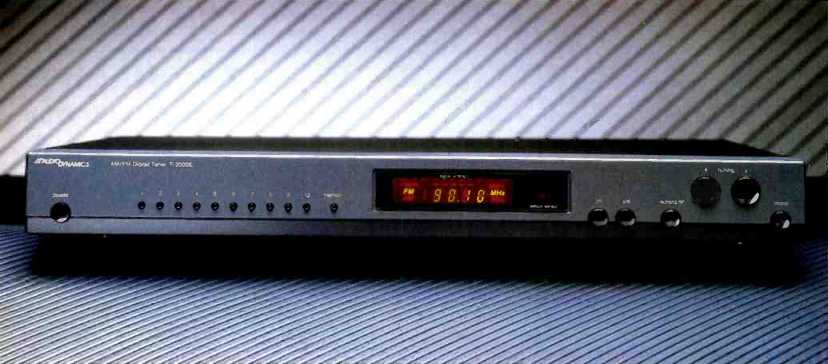
Manufacturer's Specifications
FM Section
Usable Sensitivity: 11.2 dBf.
Frequency Response: 20 Hz to 15 kHz, ± 1.0 dB.
S/N: Mono, 75 dB; stereo, 70 dB.
THD at 1 kHz: Mono, 0.1%; stereo, 0.2%.
50-dB Quieting Sensitivity: Mono, 16.2 dBf; stereo, 40 dBf.
Separation at 1 kHz: 43 dB.
Alternate-Channel Selectivity: 67 dB.
Adjacent-Channel Selectivity: 9 dB.
Capture Ratio: 1.5 dB.
AM Rejection: 55 dB.
Image Rejection: 80 dB.
I.F. Rejection: 80 dB.
Spurious-Response Rejection: 80 dB.
Subcarrier Suppression: 60 dB.
Stereo Threshold: 22 dBf.
Output Level: 500 mV.
AM Section
THD at 1 kHz: 0.8%. S/N: 40 dB.
Selectivity: 36 dB.
I.F. Rejection: 30 dB.
Image Rejection: 40 dB.
Output Level for 30% Modulation, 1 kHz: 150 mV.
General Specifications
Power Requirements: 120 V a.c., 60 Hz, 8 watts.
Dimensions: 17 in. W x 2 1/8 in. H x 12 3/8 in. D (43 cm x 5.35 cm x 32 cm).
Weight: 7 lbs. (3.2 kg).
Price: $349.
Company Address: 851 Traeger Ave., #210, San Bruno, Cal. 94066, USA.
Most readers of Audio are familiar with the name Larry Schotz. His innovative FM and r.f. circuits have found their way into many products sold by many companies which have employed his consulting firm over the last decade or so. Now Schotz has lent his expertise to a moderately priced AM/FM tuner offered by Audio Dynamics. To be sure, Schotz's only apparent contribution was his noise-reduction system; the rest of the circuitry is relatively conventional in design and performance. But when stereo reception in your listening location gets noisy, being able to push that "Schotz NR" button and realize usable reception by means of a carefully controlled amount of blending makes this tuner worth considering. Physically, it is one of the most low-slung components I've seen in quite a while; the designers obviously realized that they didn't have to wrap the circuitry in a tall but partially empty enclosure. The T-2000E stands only a bit over 2 inches high and will therefore fit under or above other components without taking up much shelf space. The owner's manual suggests that the unit requires no special cooling or ventilation, which is no great surprise since it consumes not much more power than a 7-watt night light.
Control Layout
A power button is at the lower left of the slim front panel. Nearby, arranged in a single row, 10 tiny numbered buttons and a "Memory" button enable you to store the frequencies of 10 FM plus 10 AM stations for instant recall. A display area near the center of the panel shows selected frequency, signal strength (using four LED segments), and whether a stereo signal is being received. A remote sensor is also located in the display area. While the tuner itself is not supplied with a remote control, this sensor accepts infrared commands from the remote control supplied with the Audio Dynamics CA-2000E integrated amplifier.
Further to the right are buttons for "FM" and "AM.' selection, "Schotz NR" on/off, up and down tuning, and mono/ stereo. The Schotz noise-reduction circuit can be activated only in the stereo mode. When this circuit is in operation, its control button lights up to show that the circuit is active.
Depending on signal strength and high-frequency content, the Schotz NR circuit dynamically reduces the contribution of the high-frequency difference (L R) signal, effectively blending the channels. The result is less noisy stereo reception but some loss of separation. When the signal is strong enough, the blending shuts off automatically.
The rear panel has 75-ohm coaxial as well as 300-ohm antenna terminals, a pair of terminals for connecting a supplied AM loop antenna or an external AM antenna, and the usual left and right output jacks. The loop antenna is mounted in a bracket attached to the rear panel so that the loop can be swung away from the panel and oriented for best AM reception.
Measurements
Figure 1 shows the T-2000E's FM frequency response, which actually turned out to be considerably better than the published specification. There was a slight attenuation of no more than -0.3 dB at 20 Hz, while the treble end of the response curve deviated by no more than +0.15 and -0.1 dB. Response of both channels was identical.
Figure 2 shows how residual noise varied with input signal strength. Ultimate quieting at 65 dBf and higher fell short of the claimed 75 dB for mono; I measured 70 dB. In stereo, without Schotz NR, quieting was 65 dB at 65 dBf (again, 5 dB lower than the spec); at 80 dBf, ultimate quieting was 67 dB. In mono, 50-dB quieting occurred with an input signal of 22.5 dBf; in stereo, 38 dBf of signal strength was needed to produce 50 dB of quieting. With the Schotz noise-reduction circuit active, no difference could be detected in the stereo quieting curve at strong signal levels. However, in the region between 20 dBf (the stereo threshold) and 40 dBf, signal-to-noise readings were clearly better with the Schotz circuit turned on. For example, at 30 dBf, stereo S/N was approximately 43 dB without the noise-reduction circuit and 50 dB with the circuit in use. At low signal levels, a 7-dB improvement is quite significant-and audibly so, as I proved later, when listening to weak signals.

Fig. 1--FM frequency response was identical or both channels.
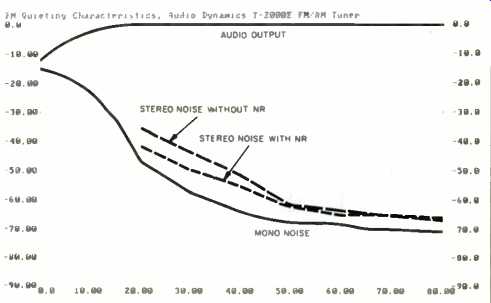
Fig. 2--Mono and stereo quieting characteristics. Note the difference in stereo
noise at low signal levels when Schotz NR is used.
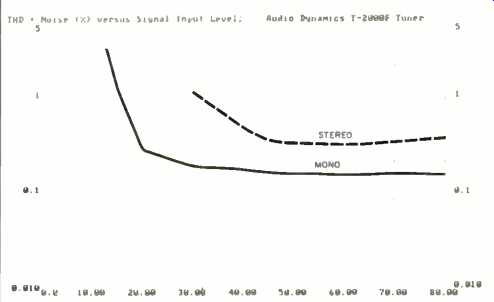
Fig. 3--THD + N vs. signal strength at 1 kHz.

Fig. 4--THD + N vs. frequency.
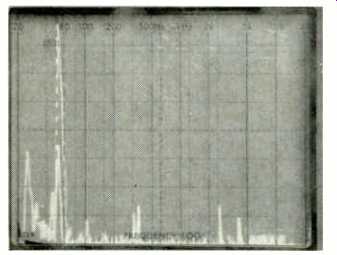
Fig. 5--Separation and crosstalk components for a 5-kHz FM modulating frequency;
see text.
Figure 3 shows how THD + N varied as a function of signal strength. The incoming signal was modulated with a 1-kHz audio tone, to 100% total modulation for both mono and stereo. Usable sensitivity, defined as the signal level which produces residual noise and THD of 3%, measured 12.5 dBf in mono. In stereo, it is determined by stereo threshold and varied from 20 to 30 dBf, depending on the station frequency at which the test was made. Harmonic distortion for strong signals, using a 1-kHz modulating tone, 0 measured 0.16% in mono and between 0.31% and 0.35% for stereo. To determine distortion at other frequencies, a sweep of distortion plus noise versus frequency was made using a constant input signal strength of 65 dBf (Fig. 4). For the three frequencies at which THD is supposed to be quoted, for mono I read 0.1% at 100 Hz, 0.16% at 1 kHz, and 0.185% at 6 kHz. In stereo, the readings were 0.5% at 100 Hz, 0.32% at 1 kHz, and 0.42% at 6 kHz.
Figure 5 shows my usual spectrum analysis sweep while measuring the output of the channel that has been fully modulated with a 5-kHz tone. (The sweep extends linearly from 0 Hz to 50 kHz.) The spike at the extreme left of the display can be ignored, for it is simply a zero beat of the heterodyning oscillators within the spectrum analyzer. The tall spike near the left of the oscilloscope's screen represents the desired 5-kHz output. A second sweep, made while the analyzer was connected to the output of the unmodulated channel, shows separation of approximately 40 dB at 5 kHz as well as spurious and harmonically related crosstalk products. The worst of these products is a full 60 dB below the opposite channel's maximum level, and you can see evidence of 19- and 38-kHz residual products in addition to sidebands surrounding 38 kHz.
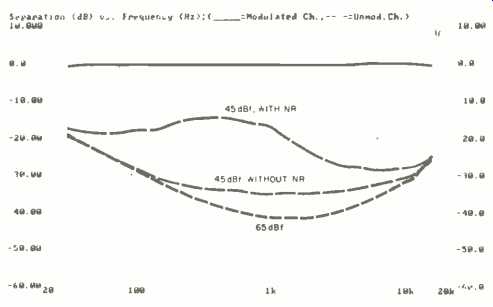
Fig. 6--Frequency response (top curve) and stereo separation at two signal
levels. Note the deliberate reduction in mid-frequency separation that occurs
when Schotz NR is used.
Figure 6 shows FM frequency response (top curve) and stereo separation. Separation was 41.5 dB at 1 kHz, 29 dB at 100 Hz, and 32 dB at 10 kHz. With signal strength reduced to 45 dBf, separation tended to decrease slightly, even without Schotz NR. When the Schotz circuit was turned on, its blending action was clearly evident: Separation at 100 Hz was reduced to approximately 18 dB; at 1 and 10 kHz, separation now measured 17 and 28 dB, respectively.
These separation figures are still sufficient to render a good stereo image. The advantage of this dynamic blend action is that out-of-phase noise in the L-R stereo subcarrier signal is partially cancelled.
Capture ratio for the FM section read 1.8 dB, and alternate-channel selectivity was 70 dB. Image, i.f., and spurious-response rejection were all between 80 dB (the published specification) and 85 dB, depending on the station frequency at which the measurements were made. AM rejection was 53 dB, and subcarrier suppression was 62 dB. SCA rejection, not specified by the manufacturer, measured just over 60 dB. Using the newly standardized pre-emphasis of 75 µS between my audio generator and the modulation input of my AM r.f. generator, I was able to obtain a fairly good frequency response for the AM section, as shown in Fig. 7. The-6 dB points, which are usually used to specify the bandwidth of AM response, were at 42 Hz and 4.2 kHz. Distortion, for a 1-kHz signal modulating the AM carrier to 30%, was 0.73%. Other measured parameters included S/N of 43 dB for a 10 mV input signal, i.f. rejection of 30 dB at 1 MHz (exactly as claimed in. the specifications), and AM selectivity of 35 dB. Incidentally, the Schotz noise-reduction circuitry plays no part in AM reception.
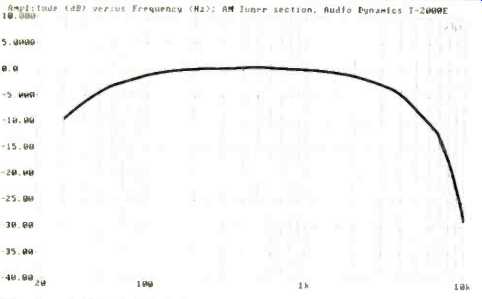
Fig. 7--AM frequency response, using new standard 75-µS pre-emphasis.
Use and Listening Tests
I hooked the T-2000E into my reference system and connected a rotatable outdoor antenna as well-as an amplified indoor antenna from Terk Technologies (which is also reviewed in this issue of Audio). Using the outdoor antenna, I was able to pull in some 48 usable signals, with 42 of them in stereo. Of these stereo stations, without the noise-reduction circuit activated, some dozen or so were too noisy to be enjoyed; more than half became usable when the "Schotz NR" button was pressed. There was still some audible background noise but not enough to hinder enjoyment of the program material. All of which substantiates the claims made for this novel circuit. I confirmed the additional claim that the Schotz circuit has no effect in the presence of strong stereo signals, even if its switch remains on. This raises a question as to why the switch is on the front panel at all. Why not leave the circuit on all the time? Indeed, Audio Dynamics recommends that course of action, and I suspect the main reason for giving the user an "on/off" choice is so that he can be satisfied that the circuit really does make a difference.
With the Terk Pi amplified indoor antenna (also designed by Larry Schotz), I was still able to pick up some 39 stations, provided I reoriented the little Pi for best reception of the weaker ones. This is good performance, considering that the Pi was at ground level in my lab, as opposed to 30 feet above ground for my multi-element outdoor antenna. Of those 39 stations, 15 were initially too noisy in stereo to be enjoyed, but the Schotz circuit rendered 10 of them listen able in stereo.
In summary, the T-2000E is quite fairly priced for what it can do. While certainly not the most sensitive AM/FM tuner I have ever measured, it should do well in most urban and suburban locations and, with an adequate outdoor antenna, should satisfy most users in fringe areas as well--especially if that "Schotz" button is kept pushed in.
---Leonard Feldman
[adapted from AUDIO magazine/Feb. 19889]
Also see:
Carver TX-11 FM Stereo Tuner (Dec. 1982)
Audioprism 7500 Indoor FM Antenna (Dec. 1989)
[adapted from Audio magazine]